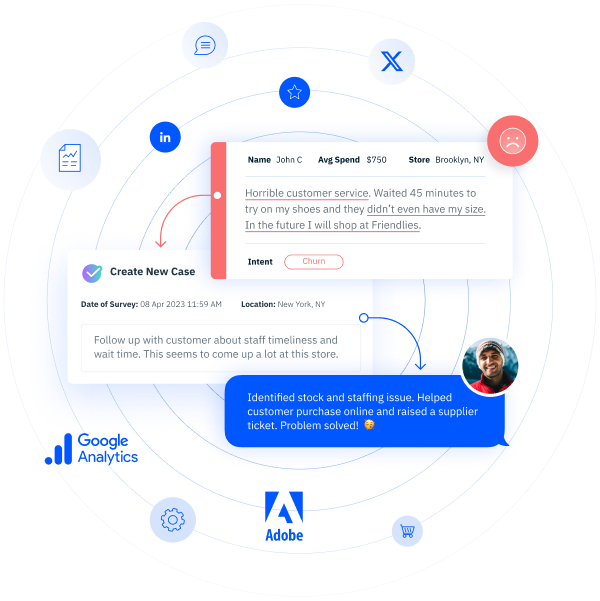If I were a betting man, and Steve Wynn’s newest car indicates that I am, I would bet your organization is not extracting as much value as it could from your Voice of the Customer (VoC) program.
Too often businesses maintain an extremely narrow focus with their VoC efforts and utilize it purely for front-line performance management. While I would be the first to acquiesce that performance management should be a core tenet of VoC, I would also state that the program should be used for much more.
To give you a flavor of what I am talking about, ask yourself the following questions:
Does Your VoC Program Assist in Testing New Products?
A typical VoC program asks about how a business did today and omits the opportunity to gain insight into new products and services they could offer tomorrow. As a business leader, you should constantly be striving to learn and understand how your business could be adding more value to the lives of your customers. An easy way to begin this process is to simply ask your current customers a few different questions, such as:
- “How could (insert your company name) be adding more value?”
- “You currently use/have used our Product X. Are there any additional products or services we could offer to help you get more value out of Product X?”
- “Please rate your level of interest in purchasing Service X (a new product) from us.”
The questions above are purely intended to kick start the hamster on your ‘idea wheel’, not specific questions that accomplish what I am suggesting. Additionally, I am not insinuating that adding a few questions to a survey replaces your existing R&D and market research efforts. If you test the waters with your customers and ask them what they want in existing VOC channels, you could potentially spur more rapid innovation and significantly enhance your forward thinking efforts.
Does Your VOX Program Inform Customers of Feedback-inspired Changes?
It boggles my mind when I learn about organizations that make fabulous improvements in their products or services based on customer feedback, and they fail to communicate to their customers that this was based on their feedback. Tell customers when you change something as a result of their feedback!
I frequently get asked, “How can I improve my survey response rates?” A simple way to increase your survey response rates is to demonstrate to customers that you are actively using the data they provide. Too often customers think that their surveys go into the ether, and for most companies, survey results do go into a vacuum. Be bold, be different, and celebrate the hell out of customer feedback and what it is delivering to your business. Customers will respond by giving you more feedback.
- Put a brief prompt in your call center IVR telling customers what you did.
- Put up signage in your stores.
- At least do something!
Does Your VoC Program Understand the Context Behind Feedback?
Most often VoC program surveys will contain questions about individual employee or overall experience attributes. Such as:
- “Please rate the knowledge of the individual that assisted you.”
- “Did the associate take ownership of your issue?”
While those questions are good, unless you know the underlying customer perceptions and context of the response, the simple quantitative data they produce may be tough to coach on. For example, Mindshare met with a fashion retail organization that uses a knowledge rating question like the ones above. When we asked the VOC leadership team what ‘knowledge’ in bullet 1 referred to, and how they should coach their store associates on the scores, we received some very different answers. It means “knowledge of fashion trends” or “knowledge of the store’s inventory and product location” or even “knowledge of pricing” etc. All are “right”, but all have very different coaching steps and context associated with them.
If there was no alignment among the 4 people in the room, there was probably a disparity at the field and store management level as well. They needed to quickly get to the bottom of what type of ‘knowledge’ is most important to their customer base, and drive that out into their training programs. To accomplish this, we suggested an insertion of a ‘verbatim’ opportunity, an open-ended response where customers could describe what a ‘knowledgeable sales associate’ was to them. This question was live in their feedback system for a short period of time where Mindshare gathered massive amounts of data which we then utilized our comment analytics technology, and “Voila!” – Instant coaching bliss. They now understand exactly what ‘knowledge’ means to their key customers.
My point here is simple: make sure you understand the customer’s perception of any experiential attributes you are asking about in your VoC program. Without that underlying understanding, your coaching efforts could be a little off.
Continually Innovate on any VoC Program
This is just a sampling of some of the innovative things you can do with an existing VoC program. If you are only doing basic performance management, we need to talk—or talk to your current VoC Advisor, Evangelist, Guru, or whatever their title is—because you are not fully leveraging the power of your VoC program. You could also be leaving precious information and money on the table.
If implemented properly, these insights can be gained in very simple, tactical ways. You can potentially save your business massive amounts of money and provide the enterprise with phenomenal new data. You can avoid survey toxicity, enhance customer experiences, and we’ll all live happily ever after.
Learn more how VoC can help you build a friendlier, more customer-friendly business with InMoment today.

